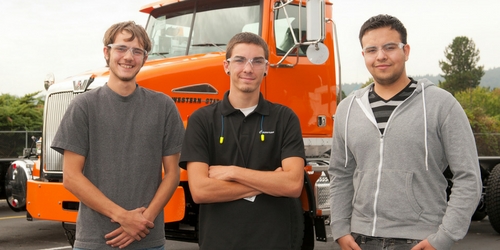
A myth has long been perpetuated across American high schools that if you don’t have a college degree, you can’t earn a living wage, leaving many students unaware of the opportunities to earn a living wage with a job in manufacturing.
According to a survey by Deloitte and the Manufacturing Institute, only 20 percent of those polled believed “the school system in my community encourages students to pursue careers in manufacturing.” And only 35 percent said they would “encourage their child to pursue a career in manufacturing.”
Many of these high school students who can’t afford college or just don’t feel it is the right path for them tend to give up and drop out, figuring they are only destined for minimum wage positions. However, when we make these students aware of skilled jobs in the trades, they find a renewed hope for the future and tend to stay in school.
In fact, manufacturing companies offer great options for high school graduates with a knack for working with both their hands and minds. Starting wages for an entry-level position in our company are well above minimum wage, and the positions come with comprehensive benefits packages, including medical insurance and retirement contributions. There is also an opportunity to advance through the ranks within the plant environment and the corporate support organizations.
However, manufacturers nationwide have difficulties finding entry-level workers. Sharing a common challenge, in 2013 we partnered with Vigor Industrial – the ship repair business near our Portland, Oregon, headquarters on Swan Island – to create Pathways to Manufacturing, a career and technical education (CTE) program managed by Impact NW, a local nonprofit public-private program.
Through the program, manufacturers aim to educate students on soft skills they need – such as resume writing and job interviewing – to complement the training they get in metals classes. Since the program launched four years ago, over 100 high school students from the Portland Public School District have participated in Pathways to Manufacturing.
“Without Pathways to Manufacturing, I wouldn’t have known such a job opportunity was available to me,” said Ephraim Lee, a high school graduate from Portland Public Schools. “Instead of settling on a minimum wage job after high school, I’m now building a career.”
As part of the program, Lee interned at DTNA in 2015 as a project team member. He is now employed as a machinist at Warn Industries where he is taking advantage of their tuition reimbursement program to pursue his associate degree in machine tool technology at Portland Community College.
The broader vision of the program aims to contribute to the ecosystem of small to large Portland manufacturers, where workers are at the ready to accommodate the uneven cycles of many manufacturers. Ideally, through the expanded network of manufacturers participating in the program, one outcome could be that as one company has less demand, workers could have options to work at another manufacturer facing increased demand.
Since the launch of Pathways to Manufacturing in 2013, the program has continued to grow in scope. In addition to the manufacturing sector, the program now provides career readiness in the fields of health care, information technology and construction, thanks to funding by new corporate sponsors, Worksystems Inc. and a grant from the Oregon Department of Education.
More information about Pathways to Manufacturing can be found online on the Impact NW website.
There are three types of transmissions used in the heavy-duty trucking segment: manual, automatic and automated manual. While it’s pretty easy to understand how a true manual transmission works, there’s often confusion about how automated manual transmissions (or AMTs for short) function versus automatic transmissions, and what unique benefits an AMT provides.
Read MoreOnly two countries in the entire world transport students to and from school via a school bus: the United States and Canada. School buses are the largest system of mass transportation in the United States, transporting nearly 25 million students daily. Even with its large numbers, school buses remain the safest way to get to and from school.
Read More